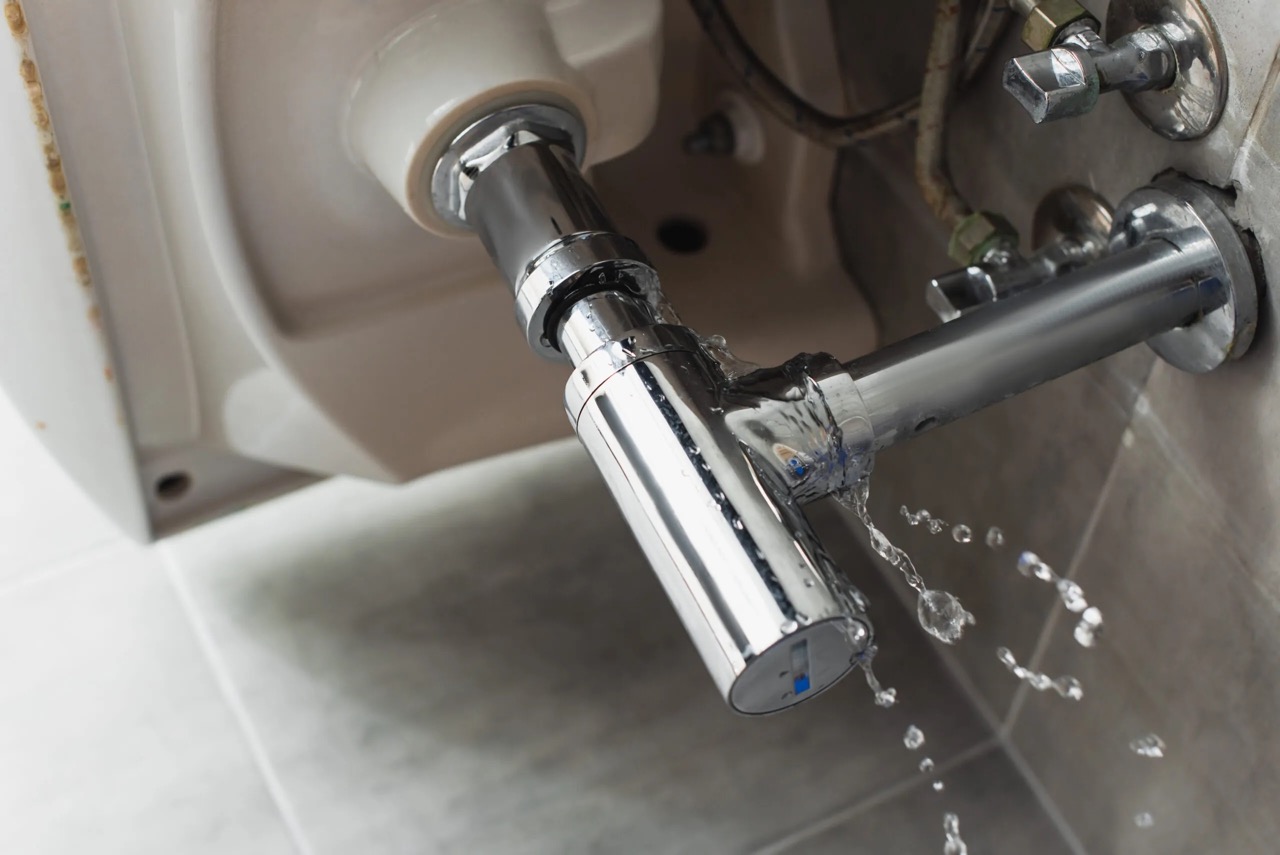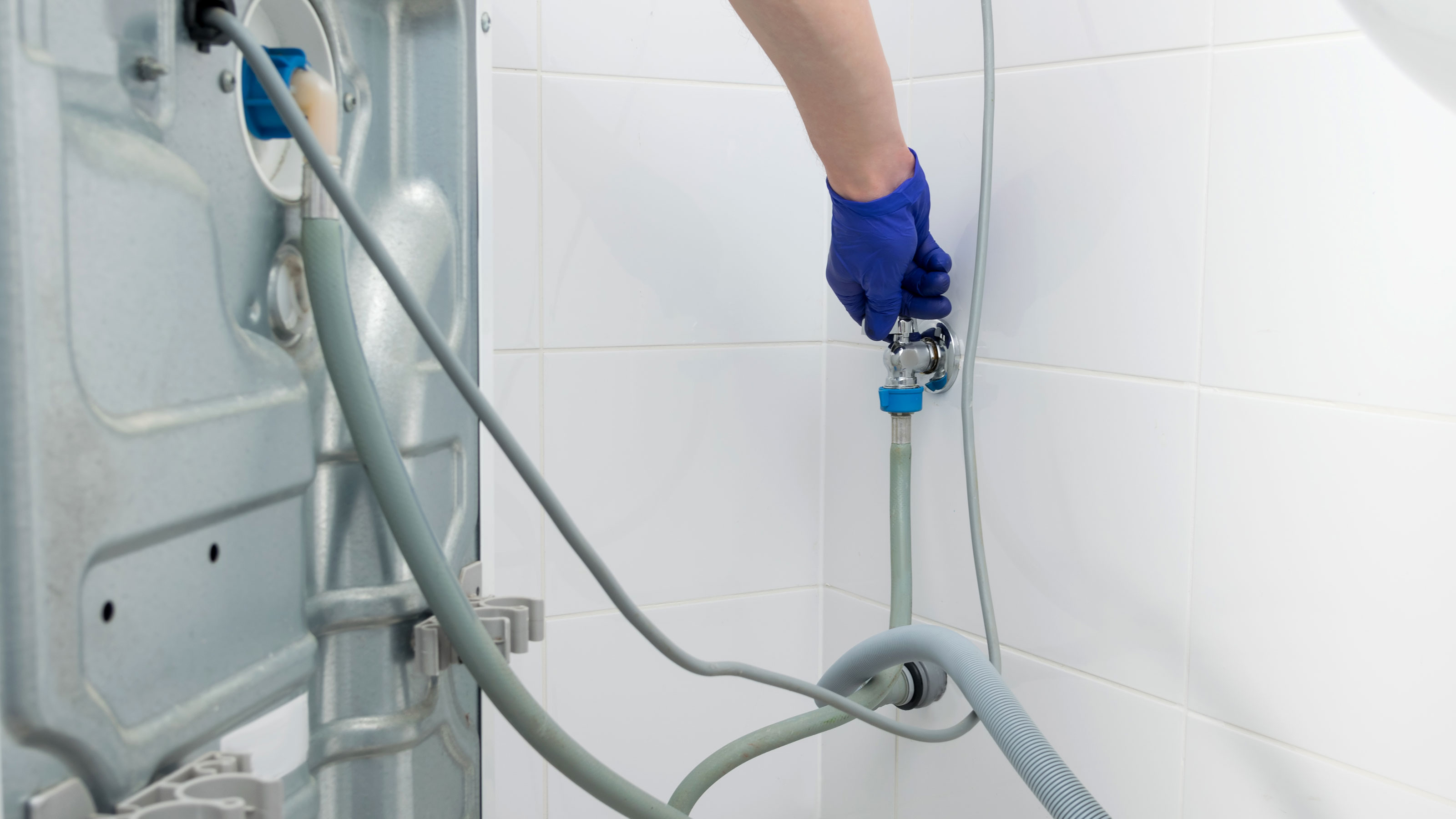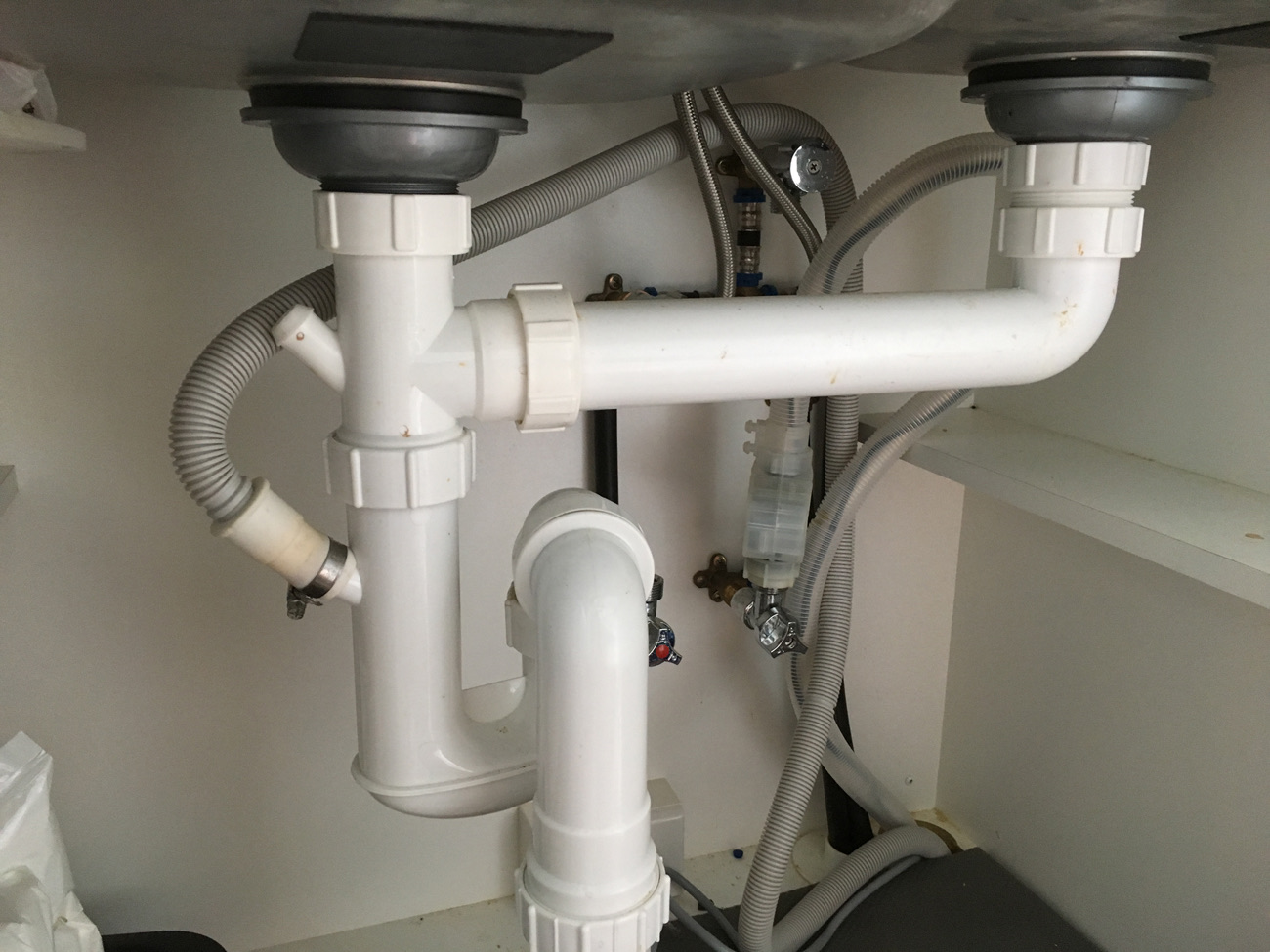Home>Articles>How Much Does It Cost To Move Kitchen Plumbing


Articles
How Much Does It Cost To Move Kitchen Plumbing
Modified: October 20, 2024
Explore articles on the cost of moving kitchen plumbing. Learn how much you can expect to pay for this common home improvement project.
(Many of the links in this article redirect to a specific reviewed product. Your purchase of these products through affiliate links helps to generate commission for Storables.com, at no extra cost. Learn more)
Introduction
When it comes to renovating or remodeling your kitchen, you may find that moving your kitchen plumbing is necessary. Whether you want to reposition your sink, relocate your dishwasher, or update the layout of your kitchen, moving your plumbing can be a complex and expensive task. Planning and budgeting for this project is crucial to ensure that you are prepared for the cost involved.
In this article, we will explore the factors that impact the cost of moving kitchen plumbing and provide you with a breakdown of the average cost. We will also discuss additional costs to consider and provide tips to help you reduce the overall cost of the project. Whether you are planning a small kitchen renovation or a complete overhaul, understanding the cost implications of moving your kitchen plumbing is essential.
Key Takeaways:
- Moving kitchen plumbing can cost between $1,000 and $5,000, depending on factors like distance, accessibility, and existing infrastructure. Budgeting 5% to 15% of your total renovation cost is recommended.
- Consider additional costs like structural changes, electrical work, and unexpected discoveries when relocating kitchen plumbing. Hiring professionals ensures safety, quality, and potential cost savings in the long run.
Factors that Impact the Cost of Moving Kitchen Plumbing
The cost of moving kitchen plumbing can vary depending on several factors. Understanding these factors will help you estimate the overall cost and plan your budget accordingly. Here are some key factors that can impact the cost of moving kitchen plumbing:
- Distance: The distance between the current plumbing location and the desired new location plays a significant role in the cost. The further the distance, the more materials, labor, and time will be required, increasing the cost.
- Accessibility: The accessibility of the plumbing system also affects the cost. If the pipes are easily accessible, it may require less effort and time to move them. However, if the pipes are hidden behind walls or under floors, additional labor and materials will be needed, increasing the cost.
- Existing Plumbing Infrastructure: The complexity of your existing plumbing infrastructure can impact the cost of moving kitchen plumbing. If you have an older home with outdated or irregular plumbing systems, it may require more extensive work to relocate the plumbing, thus increasing the cost.
- Permits and Codes: Obtaining permits and ensuring compliance with local building codes is essential. Depending on where you live, there may be specific regulations and requirements for moving kitchen plumbing. The cost of permits and compliance can add to the overall project cost.
- Scope of Work: The extent of the work involved in moving kitchen plumbing will affect the cost. If you are only moving a sink a few feet, it will be less expensive compared to relocating the entire plumbing system in a major kitchen remodel.
- Timeframe: The timeframe in which you need the plumbing work to be completed can impact the cost. Rush jobs or tight schedules may require additional labor or overtime, increasing the overall cost.
It is important to consider these factors and assess the specific requirements of your kitchen plumbing relocation project to estimate the cost accurately. Consulting with a professional plumber or contractor can help provide a more accurate cost estimate based on your specific needs.
Average Cost of Moving Kitchen Plumbing
The cost of moving kitchen plumbing can vary significantly depending on the complexity of the project and the factors mentioned earlier. On average, you can expect to pay between $1,000 and $5,000 for moving kitchen plumbing.
Keep in mind that this is just an average range, and the actual cost can be higher or lower depending on various factors. Small plumbing relocations, such as moving a sink a few feet, may cost on the lower end of the spectrum. On the other hand, larger projects that involve relocating the entire plumbing system to a different area of the kitchen may fall on the higher end of the range.
It’s important to note that this cost estimate only includes the labor and materials required to move the plumbing. Additional costs, such as permits, inspections, and any repairs or modifications to the existing plumbing infrastructure, are not included in this estimate.
When budgeting for your kitchen remodeling project, it is recommended to allocate between 5% and 15% of your total renovation budget for moving kitchen plumbing. This will give you a rough estimate of how much you should set aside for this specific aspect of the project.
Remember, these figures are based on average costs, and the final cost can vary depending on your location, contractor rates, and specific project requirements. To get a more accurate estimate, it is advisable to consult with multiple professional plumbers or contractors and obtain detailed quotes for your particular project.
Cost Breakdown of Moving Kitchen Plumbing Components
When it comes to moving kitchen plumbing, there are several components involved that contribute to the overall cost. Here is a breakdown of the main components and their associated costs:
- Labor: The labor cost typically accounts for a significant portion of the total cost. This includes the time and expertise required to disconnect and reposition the plumbing fixtures, reroute pipes, and connect them to the new location. Labor costs can vary based on the complexity of the project and the hourly rates of the plumber or contractor.
- Pipes and Fittings: Depending on the distance and design of the new plumbing layout, you may need to purchase additional pipes and fittings. The cost of pipes and fittings can vary based on the material (such as PVC, copper, or PEX) and the quantity required.
- Plumbing Fixtures: If you are planning to install new plumbing fixtures, such as sinks, faucets, or a dishwasher, these will be additional costs to consider. The cost of plumbing fixtures can vary widely, depending on the quality, brand, and style you choose.
- Inspections and Permits: Depending on your local regulations, you may need to obtain permits and schedule inspections for the plumbing work. The cost of permits and inspections varies by jurisdiction and can add to the overall project cost.
- Repairs or Modifications: In some cases, moving kitchen plumbing may require repairs or modifications to the existing plumbing system. This can include fixing leaks, replacing old pipes, or upgrading components to meet code requirements. The cost of repairs or modifications will depend on the extent of the work needed.
It is important to factor in these costs when planning your budget for moving kitchen plumbing. Keep in mind that these costs can vary depending on your location, the specific scope of the project, and the quality of materials and fixtures you choose.
When obtaining quotes from plumbers or contractors, make sure to ask for a detailed breakdown of the costs involved in moving each plumbing component. This will help you compare quotes and make an informed decision based on your budget and needs.
When budgeting for moving kitchen plumbing, consider the cost of hiring a licensed plumber, purchasing new plumbing fixtures, and any necessary permits. Additionally, factor in the cost of repairing any damage to walls, floors, or cabinets during the process.
Additional Costs to Consider
When budgeting for moving kitchen plumbing, it’s important to consider additional costs that may arise during the project. While these costs are not directly related to the plumbing work itself, they are important factors to consider in order to avoid any financial surprises. Here are some additional costs to keep in mind:
- Structural Changes: Moving kitchen plumbing may require making structural changes to your kitchen, such as cutting into walls or floors to reroute pipes. Depending on the extent of the structural changes needed, you may incur additional costs for repairs, patching, or painting.
- Electrical Work: If your kitchen remodel involves relocating outlets or appliances that require electrical connections, you may need to hire an electrician. The cost of electrical work should be factored into your budget separately from the plumbing costs.
- Cabinetry and Countertops: When moving kitchen plumbing, you may need to adjust or modify your cabinetry and countertops to accommodate the new plumbing layout. This can involve removing or reinstalling cabinetry, cutting and resizing countertops, or even purchasing new cabinetry and countertops altogether.
- Appliance Installation: If you are installing new appliances in your kitchen as part of the remodel, such as a dishwasher or a refrigerator with a water line, you may need to hire professionals to install these appliances. The cost of appliance installation should be considered separately from the plumbing costs.
- Unexpected Discoveries: During the plumbing relocation process, unforeseen issues like hidden leaks, damaged pipes, or deteriorated plumbing infrastructure may arise. These unexpected discoveries can lead to additional repairs and costs that were not originally planned for.
It’s essential to anticipate and budget for these additional costs to ensure that you have sufficient funds to cover the entire kitchen remodeling project. Consult with your contractor or remodeling professional to evaluate potential additional costs based on the specific details of your project.
By accounting for these additional costs upfront, you can avoid financial stress and ensure a smooth and successful kitchen plumbing relocation.
Read more: How Much Does Plumbing Repair Cost
Tips to Reduce the Cost of Moving Kitchen Plumbing
Moving kitchen plumbing can be a significant expense, but there are certain strategies you can employ to help reduce the overall cost. Consider these tips to help you save money on your plumbing relocation project:
- Plan Ahead: Proper planning is crucial to avoid unnecessary expenses. Take the time to carefully plan the new layout of your kitchen and the location of the plumbing fixtures. This will help minimize the need for extensive rerouting of pipes and reduce the overall labor and material costs.
- Hire a Professional: While it may be tempting to try DIY methods, it’s highly recommended to hire a professional plumber or contractor for moving kitchen plumbing. They have the expertise and experience to ensure the job is done correctly, minimizing the risk of mistakes or costly repairs in the future.
- Reuse Existing Materials: If possible, try to reuse existing plumbing materials such as pipes, fittings, and fixtures. Depending on their condition and compatibility with the new layout, this can help save on material costs.
- Compare Multiple Quotes: Obtain quotes from multiple plumbers or contractors to compare pricing and services. Be sure to request a detailed breakdown of the costs involved so that you can make an informed decision based on your budget and needs.
- Consider Off-Peak Seasons: Some plumbers or contractors may offer discounts or lower rates during their off-peak seasons. Consider scheduling your project during these times to take advantage of potential cost savings.
- Optimize Existing Infrastructure: Work with your plumber or contractor to explore options for optimizing your existing plumbing infrastructure. This may involve finding creative solutions to minimize the need for rerouting or completely relocating pipes and fixtures.
- DIY Non-Technical Tasks: While complex plumbing work should be left to professionals, there may be non-technical tasks that you can handle yourself to save on labor costs. This could include tasks like removing cabinetry, appliances, or old fixtures before the plumber arrives.
- Stay Informed: Educate yourself about the basic principles of plumbing and familiarize yourself with local building codes. This will help you communicate effectively with your plumber or contractor and understand the work involved, potentially avoiding unnecessary costs or mistakes.
Remember, even though cost reduction is important, it’s essential to prioritize quality and ensuring the work is done properly. Cutting corners or compromising on the expertise of professionals can lead to costly repairs or issues down the line. Balance your budget considerations with the need for a safe and efficient plumbing relocation.
By implementing these tips, you can potentially save money without compromising on the quality and functionality of your kitchen plumbing relocation project.
Hiring Professionals vs. DIY
When it comes to moving kitchen plumbing, one of the important decisions you need to make is whether to hire professionals or attempt a DIY approach. While DIY projects can be cost-effective, there are several factors to consider before deciding which route to take. Here are some key points to help you make an informed choice:
- Expertise and Experience: Professional plumbers or contractors have the necessary expertise and experience to handle complex plumbing tasks. They understand the intricacies of plumbing systems, local building codes, and best practices. Attempting a DIY approach without proper knowledge and experience may lead to mistakes, leaks, or even damage to your home.
- Licensing and Permits: Professional plumbers are licensed and insured, ensuring that the work is done in compliance with local regulations. They can help you obtain the necessary permits and schedule inspections, avoiding any legal issues that might arise from an unauthorized or non-compliant DIY project.
- Time and Efficiency: Plumbing projects can be time-consuming, especially if you are not familiar with the process. Hiring professionals means that the work will be completed efficiently and in a timely manner, minimizing disruptions to your daily routine. They have the necessary tools, equipment, and manpower to tackle the project efficiently.
- Quality and Warranty: Professional plumbers typically provide warranties for their work. If any issues arise after the project is completed, they will return to fix them at no additional cost. Additionally, their work is backed by their reputation and the quality assurance that comes with hiring a licensed professional.
- Safety: Plumbing work involves working with water, gas, and potentially electrical connections. A professional plumber knows how to ensure the safety of themselves and your home during the project. They have the necessary training to handle any unforeseen complications or emergencies that may arise.
- Cost Considerations: While DIY projects may seem cost-effective upfront, they can end up being more expensive in the long run. Mistakes or improper installations can lead to leaks, water damage, or the need for expensive repairs down the line. Hiring professionals ensures that the work is done correctly the first time, potentially saving you money on future repairs and maintenance.
Ultimately, the decision between hiring professionals and DIY will depend on your level of expertise, the complexity of the project, and your budget constraints. If you are confident in your plumbing skills, have the necessary knowledge, and are comfortable obtaining permits and scheduling inspections, a DIY approach may be feasible. However, for complex projects or if you lack plumbing experience, it’s highly recommended to hire professionals to ensure a safe and successful plumbing relocation.
Consult with multiple plumbers or contractors to compare quotes and assess their expertise. They can provide insights into the specific requirements of your project and help you make an informed decision based on your needs, budget, and timeline.
Conclusion
Moving kitchen plumbing is a significant undertaking that requires careful planning and budgeting. Understanding the factors that impact the cost, the average cost range, and the breakdown of components is essential to ensure you have a realistic budget in place. Additionally, considering the additional costs and implementing tips to reduce expenses can help you manage the overall project cost effectively.
While there may be a temptation to take on a DIY approach to save money, it’s important to weigh the benefits and risks. Hiring professionals ensures that the work is done correctly, in compliance with regulations, and with the necessary expertise to handle any unforeseen challenges. DIY projects may have cost savings upfront, but they carry the risk of mistakes, additional repairs, and potential safety hazards.
By hiring professionals, you can have peace of mind knowing that your kitchen plumbing will be relocated efficiently, safely, and to the highest quality standards. Professionals also provide warranties for their work, ensuring that you are protected in case any issues arise in the future.
Remember to consult with multiple plumbers or contractors to obtain detailed quotes and assess their expertise. This will help you make an informed decision based on your specific needs, budget, and timeline.
In conclusion, moving kitchen plumbing is a complex task that requires careful consideration. By understanding the factors that impact the cost, implementing cost-saving measures, and making a well-informed decision between hiring professionals and DIY, you can successfully complete your kitchen plumbing relocation project within your budget and achieve the desired outcome for your new kitchen design.
Frequently Asked Questions about How Much Does It Cost To Move Kitchen Plumbing
Was this page helpful?
At Storables.com, we guarantee accurate and reliable information. Our content, validated by Expert Board Contributors, is crafted following stringent Editorial Policies. We're committed to providing you with well-researched, expert-backed insights for all your informational needs.















0 thoughts on “How Much Does It Cost To Move Kitchen Plumbing”